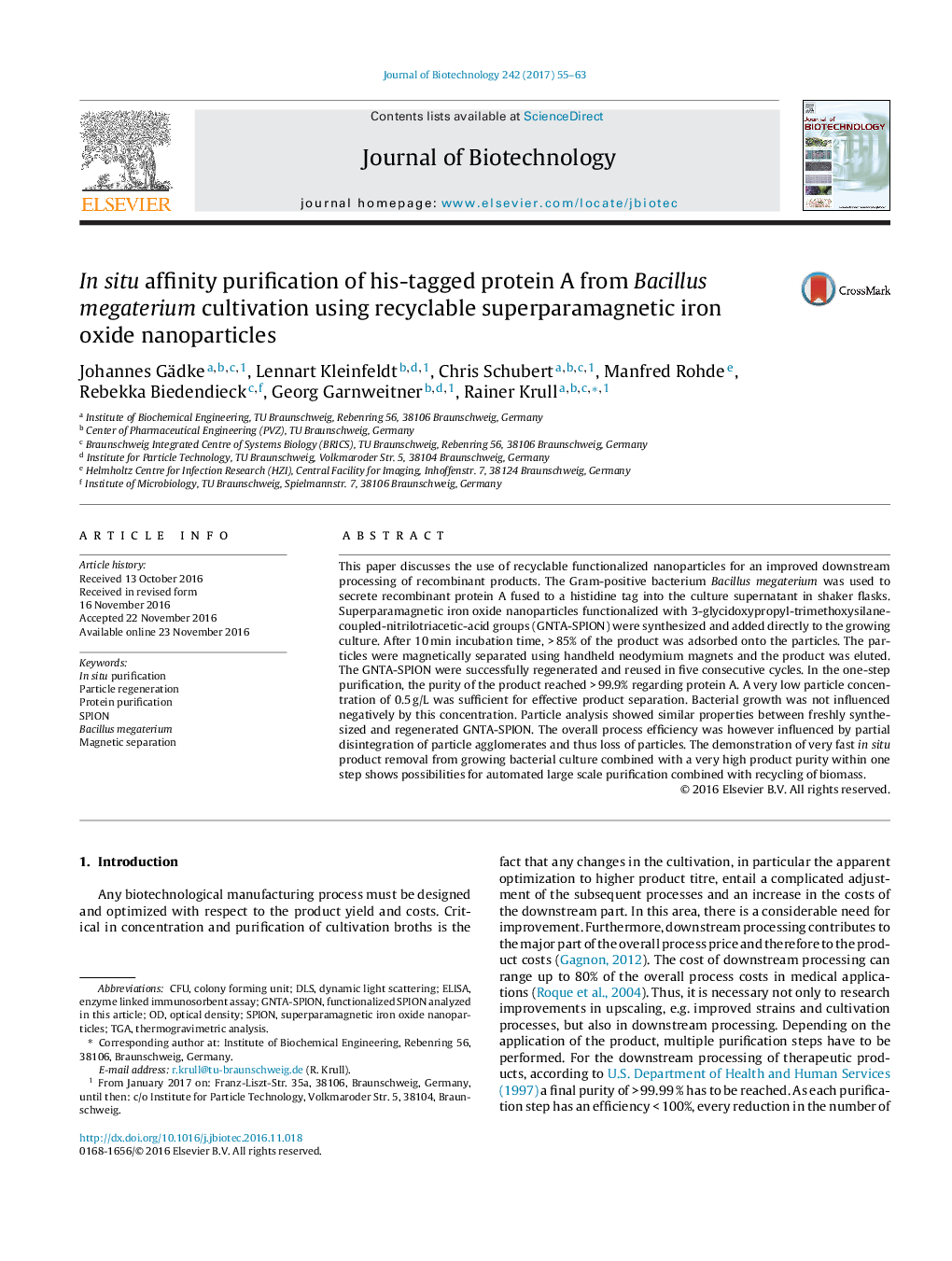| Article ID | Journal | Published Year | Pages | File Type |
|---|---|---|---|---|
| 6452228 | Journal of Biotechnology | 2017 | 9 Pages |
â¢Functionalized SPION (GNTA-SPION) as sophisticated agent for product separation.â¢Handheld magnets for fast SPION in situ removal from biotechnological process.â¢One-step purification reaching high product purity using very low GNTA-SPION concentration.â¢Successful GNTA-SPION regeneration and use in five consecutive cycles.â¢No negative influence on bacterial growth and production behavior.
This paper discusses the use of recyclable functionalized nanoparticles for an improved downstream processing of recombinant products. The Gram-positive bacterium Bacillus megaterium was used to secrete recombinant protein A fused to a histidine tag into the culture supernatant in shaker flasks. Superparamagnetic iron oxide nanoparticles functionalized with 3-glycidoxypropyl-trimethoxysilane-coupled-nitrilotriacetic-acid groups (GNTA-SPION) were synthesized and added directly to the growing culture. After 10Â min incubation time, >Â 85% of the product was adsorbed onto the particles. The particles were magnetically separated using handheld neodymium magnets and the product was eluted. The GNTA-SPION were successfully regenerated and reused in five consecutive cycles. In the one-step purification, the purity of the product reached >Â 99.9% regarding protein A. A very low particle concentration of 0.5Â g/L was sufficient for effective product separation. Bacterial growth was not influenced negatively by this concentration. Particle analysis showed similar properties between freshly synthesized and regenerated GNTA-SPION. The overall process efficiency was however influenced by partial disintegration of particle agglomerates and thus loss of particles. The demonstration of very fast in situ product removal from growing bacterial culture combined with a very high product purity within one step shows possibilities for automated large scale purification combined with recycling of biomass.
